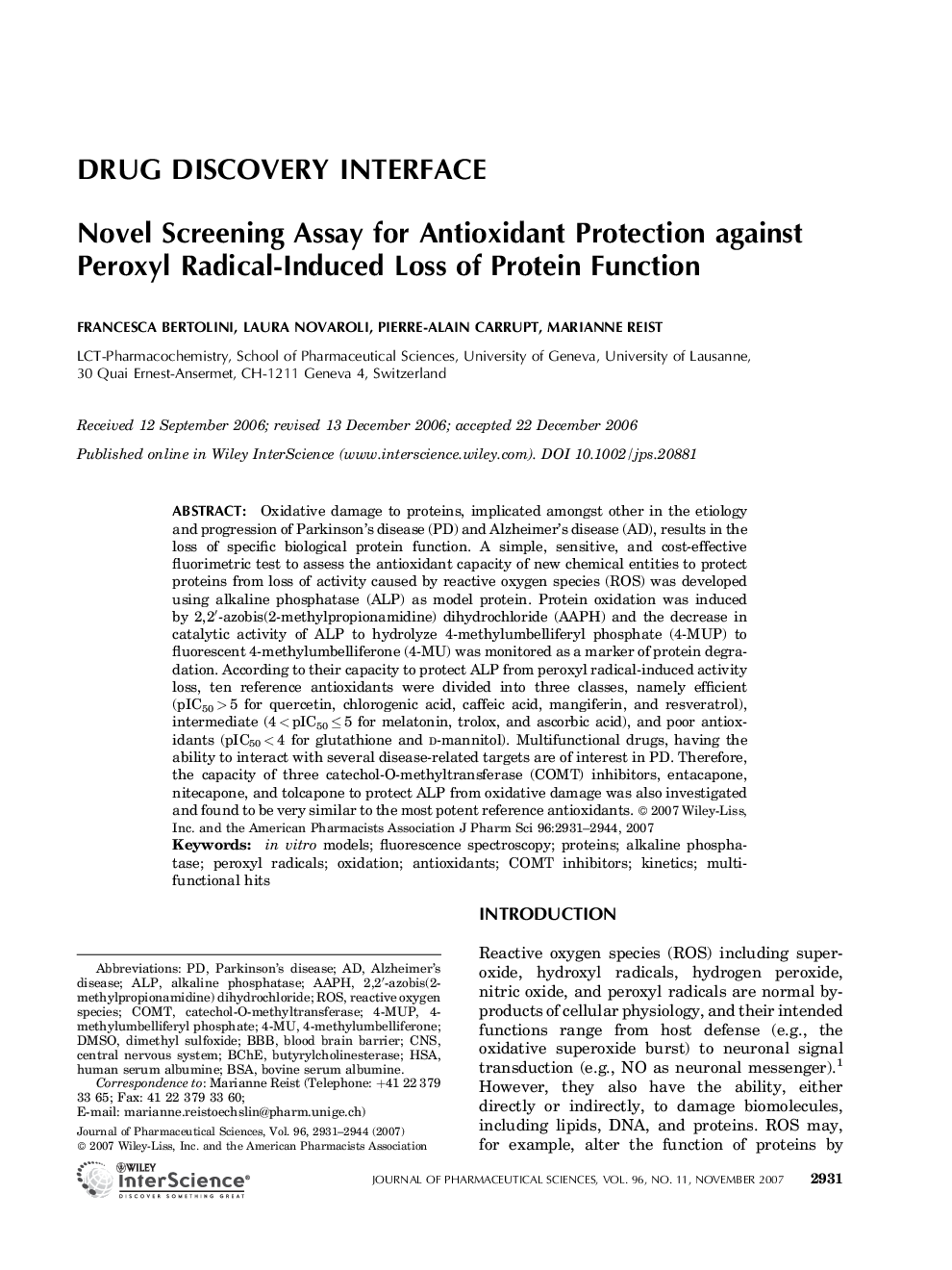| Article ID | Journal | Published Year | Pages | File Type |
|---|---|---|---|---|
| 2487723 | Journal of Pharmaceutical Sciences | 2007 | 14 Pages |
Abstract
Oxidative damage to proteins, implicated amongst other in the etiology and progression of Parkinson's disease (PD) and Alzheimer's disease (AD), results in the loss of specific biological protein function. A simple, sensitive, and costâeffective fluorimetric test to assess the antioxidant capacity of new chemical entities to protect proteins from loss of activity caused by reactive oxygen species (ROS) was developed using alkaline phosphatase (ALP) as model protein. Protein oxidation was induced by 2,2â²âazobis(2âmethylpropionamidine) dihydrochloride (AAPH) and the decrease in catalytic activity of ALP to hydrolyze 4âmethylumbelliferyl phosphate (4âMUP) to fluorescent 4âmethylumbelliferone (4âMU) was monitored as a marker of protein degradation. According to their capacity to protect ALP from peroxyl radicalâinduced activity loss, ten reference antioxidants were divided into three classes, namely efficient (pIC50 > 5 for quercetin, chlorogenic acid, caffeic acid, mangiferin, and resveratrol), intermediate (4 < pIC50 ⤠5 for melatonin, trolox, and ascorbic acid), and poor antioxidants (pIC50 < 4 for glutathione and Dâmannitol). Multifunctional drugs, having the ability to interact with several diseaseârelated targets are of interest in PD. Therefore, the capacity of three catecholâOâmethyltransferase (COMT) inhibitors, entacapone, nitecapone, and tolcapone to protect ALP from oxidative damage was also investigated and found to be very similar to the most potent reference antioxidants. © 2007 WileyâLiss, Inc. and the American Pharmacists Association J Pharm Sci 96: 2931-2944, 2007
Keywords
Related Topics
Health Sciences
Pharmacology, Toxicology and Pharmaceutical Science
Drug Discovery
Authors
Francesca Bertolini, Laura Novaroli, PierreâAlain Carrupt, Marianne Reist,
